Tag: vineyard
Canopy Management, Part II
Here’s some pictures from the weekend class at DuCard Vineyard, thanks to classmate Margaret Frazier, who I have no doubt will one day soon be producing very high quality Virginia wines.
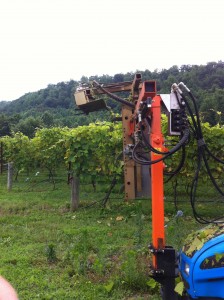
This is the hedger used to trim the tops of the vines in the lyre trellis. It's a bit hard to tell, but the arm of the hedger has whirling blades on both sides, which cuts one arm of the vines.
Grow Tubes Reconsidered
Those of you who have been following this blog know that I recently offered some unkind words about grow tubes, which many vineyards use to nurse along young vines. My criticism was based partly on research and partly on personal experience.
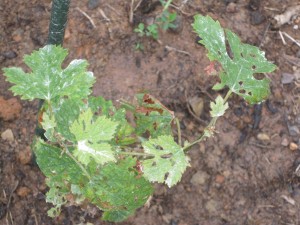
The Nelson vineyard vines, (do seven vines make a vineyard?) after removal of the tubes, leave a lot to be desired.
As I recounted, we had been told in one vineyard management class to use grow tubes, and then, in another, to get them off the vines post-haste. We had two points of reference.
First, our Fairfax vines, which were planted and nurtured without benefit of grow tubes, are doing spectacularly well. It’s possible, of course, that we’re just kidding ourselves, and the growth we’re seeing is the result of overly vigorous vines. While vigor is no
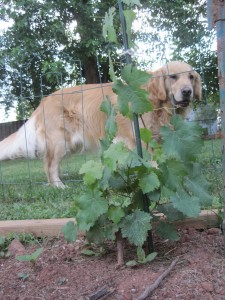
The Fairfax vines (all seven of them) seem to be flourishing, perhaps because Phoenix, the Vineyard Dog, stands guard over them.
doubt welcomed by farmers raising soy or corn, overly aggressive vines produce low-quality fruit. We want the vigor to go to the grapes, not the vines.
Be that as it may, the Fairfax vines appear strong and healthy. By contrast, the vines on our Nelson County property, which were planted with the protective shelter of grow tubes, seem, well, frail. They have holes in the leaves. Lots of holes. And scrawny, brown-looking leaves. Not what we had hoped for at all.
We wondered if the grow tubes were the problem. One of our friends who manages a large vineyard, urged us to take the tubes off, warning that, in this heat, all we were doing was baking the vines. We did some investigating on our own, and much of the research we looked at suggested that the only reason for using grow tubes is to facilitate the use of herbicides – the tubes protect the vine while Roundup or something like that clears vegetation out of the rows of vines.
So, we swore of grow tubes, and I wrote an angry rant about them. I haven’t changed my mind, but in fairness, I have to say that it appears that almost everyone else in this business loves grow tubes. Continue Reading–>
A Tale of Two Vineyards, Part I (In which the origin of the Fairfax vineyard is described.)
The decision to plant vines this year came after a lot of hand-wringing and was made only at the last minute. Looking back, it's hard for me to believe that we agonized so long over this decision. After all, we planted a grand total of 14 vines on two properties, not exactly a huge commitment of time or money. And now that we've worked a bit with them, most of
Digging out the old vegetable garden to make room for vines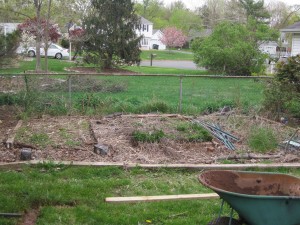
the concerns I had have long since faded away.
At the time, though, I wondered how we would find time to care for them. How we would manage the spray schedules. How we would get the soil ready. And how we would manage the trellising on such short notice.
We ended up planting two vines in Nelson County that were given to us after a class on vine grafting, and once we had those in the ground, we realized this was something we could do. So, I took a leap of faith and ordered a dozen Cab Franc vines from Double A Vineyards, figuring that by the time they arrived, we'd find a way to get the ground ready for planting at both the Fairfax and Nelson County sites. More on the Nelson County vineyard later.
The first pictures show the state of play in the Fairfax vineyard at the time I ordered the vines. It's part of an old garden, plus a bit of lawn that I decided to appropriate in order to provide room for three separate rows.
A closer look at the future Fairfax Vineyard - not a pretty sight, and not much time to prepare.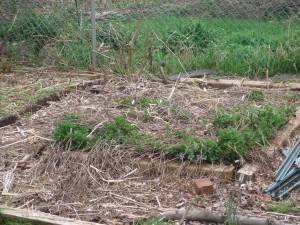
We're not talking big rows: two, with two vines each, and a third with three vines. But it's enough to provide grapes for five gallons of wine, just the right amount to ferment at home.
My first problem was finding the time to prepare the vineyard. We were going out of town most weekends (hanging out at the site of the Nelson County family vineyard), and it was getting dark early. Working when I could, I found time to clear out the growth in the garden, clear the sod in the lawn, and lay out the rows, using eight-foot metal fence posts as a guide. The rows were laid out seven feet apart, and the vines were to be spaced six feet apart.
The vines arrived on April 20, and I realized we would not have time to plant in Fairfax that week. Inside the packaging, the roots were wrapped with shredded newsprint that was still soaking wet. It was probably enough moisture, but I added a bit more water anyhow, and resealed the package. Anything worth doing is worth overdoing, in my humble opinion.
Overdone or not, the vines stayed healthy, and I planted the following week on April 26. Vines may be a bit too big of a word to describe what we actually planted. The plants consisted of a healthy-looking root (101-14 for those of you who care about such things – and if you are interested in establishing your own vineyard, you must care about such things), that ended with the graft union. What I was more familiar with was a plant that had both root and a scion, which is the particular type of vine. Cab Franc, for example, comes in a number of different clones and, again, for those of you who care about such things, these were FPS 04/332, grafted onto the 101-14 rootstock. Except that I couldn't see any part of the scion. In other words — and to get back on point — I was accustomed to seeing vines that looked like vines, not roots with a tiny stub of a graft union on top.
I called the nursery, and was told that the graft union had tremendous growth potential that would be unleashed if I simply hilled it over (covered it with dirt) and waited for the shoots to break through. I felt a bit like Jack and the Beanstalk being told to bury magic beans, but I did it anyhow, and three weeks later I had a bit of growth beneath the hilled-over soil. (It went a bit faster in Nelson County.)
In the foreground, a Cab Franc vine stands 25 inches tall. The one in the background a bit smaller.
We carefully cleared the hilled-over dirt away, making sure that the graft union was at least two inches above ground. The concern is that if the soil manages to come into contact with the scion above the graft union, the vine itself will begin to develop roots and will essentially be growing on its own root. This is a story for another time, but to make it quick, the vine has everything it needs to grow, including the ability to develop roots, but lacks one thing — resistance to Phylloxera, an insect that that nearly destroyed Europe's vineyards in the 19th century. That's why Vinifera vines (Merlot, Cab, Chard, pretty much every varietal you're accustomed to drinking) must be grafted onto American root stock, which is mostly immune to Phylloxera.
We let these vines grow without the grow tubes we used in the Nelson Vineyard. We worried about that decision for a long time (well, weeks) until we decided that grow tubes were creating more problems than they were solving.
In any event, these vines are doing pretty well.
They seem healthy and vigorous (hopefully not too vigorous), and the tallest of the group is about 25 inches. They need to be pruned back, but that's a story for next time. I've included three pictures, including one with Phoenix the Vineyard Dog standing guard from outside the fence.
One footnote: the fence serves to keep Phoenix out, but won't help with rabbits, deer or any of the other Bambi/Thumper-type predators that feed on vines. Very soon, we'll be putting up a deer fence, but for now we're counting on luck to keep these young vines safe.
Phoenix the Vineyard Dog standing guard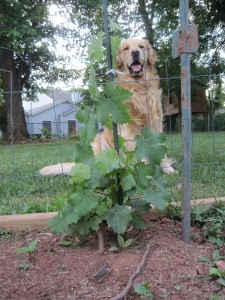
Goodbye to Grow Tubes Forever!
Apparently there’s no agreed-upon rule book for viticulture.
When we planted Cab Franc vines on our Nelson County property, we followed the advice offered at a class on that very subject at the Piedmont Virginia Community College (great curriculum –the best available in Virginia today), and covered them with grow tubes. We
did the same for the two Mammolo Tuscano vines which we had received as a gift from Gabriele Rausse, one of the founding fathers of the Virginia wine industry and the instructor for a class on grafting.
At another class over the weekend, we were told, in no uncertain terms, to take them off. Sigh.
After doing a lot of overnight research, we decided that the grow tubes – ours are the so-called “Blue X,” which consist of a blue plastic insert and a soft-skin translucent blue sleeve – had to go. But it was kind of a close call.
A lot of the research we looked at suggested that while grow tubes provide a hot-house environment that jump starts the growth of the vines in their early months, they also prevent the vines from achieving their potential. The focus of the first two years is developing a strong trunk and root system. As Julien, the vineyard manager at DuCard Vineyards, told me, you must be willing to do the work, and to do it when it needs to be done. And you must be willing to be patient. The tubes, he added, rushed the process and created a hot-house that could cook the vines to death in the 90-plus degree weather we’ve been having.
My wife, the Vineyard Goddess (and future Vineyard Manager), took Julien’s words to heart and found a good deal of evidence to support the anti-grow tube proposition. Continue Reading–>
A Vineyard Management class at DuCard Vineyards
Saturday's vineyard management class was the second of four at DuCard Vineyards, in Etlan, Virginia. We've been working with a section of Norton vines, and we'll be seeing them through until the harvest. Lots of work done is while we're not there (spraying, among other things), but we're doing much (well, some) of the essential work on the vines.
Scott Elliff, the vineyard's owner, has been migrating his vineyard from a Geneva Double Curtain trellising system to a modified Lyre system, so in our first class, we worked on pruning vines to facilitate that transition. Both GDC and Lyre are divided canopy systems in which the trunk of the vine is planted in the middle of two sets of trellis wires about four feet apart. With GDC, the vines grow downward, like a waterfall on each side of the row. With Lyre, they run up. Continue Reading–>
Welcome to Project Sunlight
Welcome to Project Sunlight, a blog about wine and my attempt to become a winemaker.
You may have noticed that the banner on my blog suggests that I will learn and chronicle all there is to know about this subject over the next year. That’s not exactly correct, although it’s a useful shorthand that does happen to fit within the banner. The correct part is that I plan to learn as much as I can about winemaking over the coming 12 months and discuss what I’ve learned on this blog. The incorrect part has to do with the timeframe. Continue Reading–>

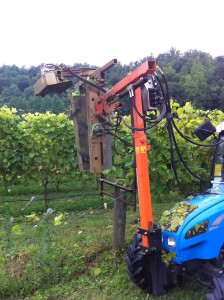
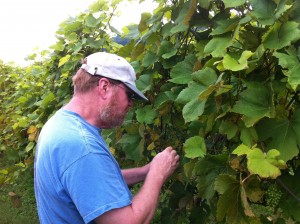
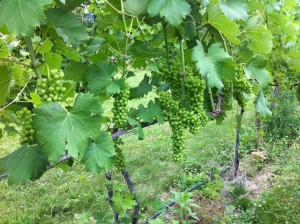
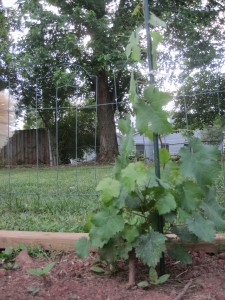
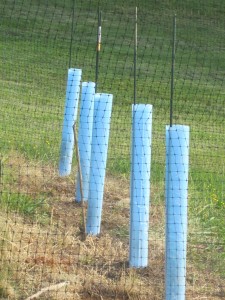
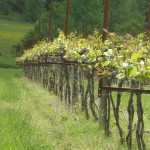
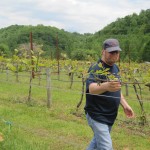
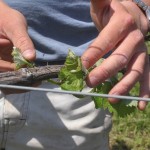
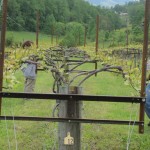
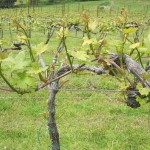
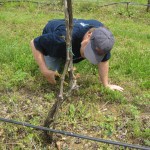


Recent Comments